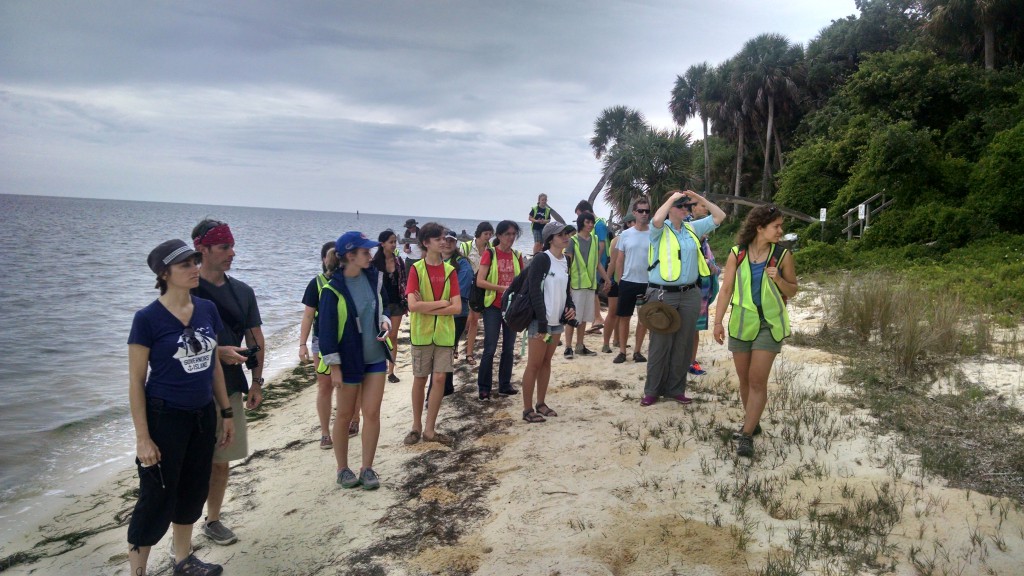Every journalist knows a face-to-face conversation is always better than a telephone interview, that taking the time to see, touch and experience what we’re reporting nets a far better story than mining details on the internet.
That truth is part of the reason for our field trip in UF’s Environmental Journalism courses. This semester, we headed to UF’s Seahorse Key Marine Laboratory to experience the mangrove-lined Gulf coast island and hear about the national news that took place there in spring. One of the largest bird rookeries on the Gulf coast, Seahorse is a nesting ground for thousands of snowy egrets, pelicans, roseate spoonbills and other shorebirds. In May, the birds suddenly abandoned their nests, a story that drew fairly dire coverage in the New York Times, NPR, and many other outlets.
After climbing to the top of Seahorse’s historic lighthouse and hiking along the island’s wild shoreline, students talked with Maria Sgambati, the lab’s education and outreach coordinator, and Kenny McCain, the facilities manager and boat captain. Capt. Kenny has a ZZ-Top beard and a depth of local knowledge and history that comes from being born and raised in Cedar Key and working for a quarter-century as a federal wildlife officer along the islands that make up the Cedar Keys National Wildlife Refuge.
In science reporting, “the devil is often in the details,” Sgambati told the students. Most of the stories, she said, made it sound as if 20,000 birds vanished into thin air, downplaying – or never mentioning – that a significant part of the colony relocated to Snake Key next door, built new nests, laid new eggs and reared new young. “It was hard for (reporters) to get across the science behind generating hypothesis and building credibility,” she says. “For instance, if it were a pollution or food-source issue, we would have seen more bird deaths or more gradual departures, or birds going much further away than Snake Key.”
Sgambati thought Tessa Stuart of Audubon magazine did the best job ferreting out different theories for the nest abandonment, which include those as mundane as raccoons or aircraft noise. Researchers may never know for sure what caused the colony to fly away. The most important questions will be answered next spring: Will the birds return to Seahorse Key? Will they return to Snake? Also significant: What will happen to Seahorse’s cottonmouth snakes, which famously depend on fish falling from the birds’ nests for their survival? UF, state and federal scientists have lined up studies of those questions and others.
Meanwhile Capt. Kenny has his money on the raccoons. His stories of wrangling with the masked bandits over his lifetime on these islands had the students laughing over their lunches, and gleaning valuable lessons on the importance of indigenous knowledge – along with those on nuanced writing, and of course, reporting in person, especially when it means spending the day on an undeveloped island in the Gulf of Mexico.




